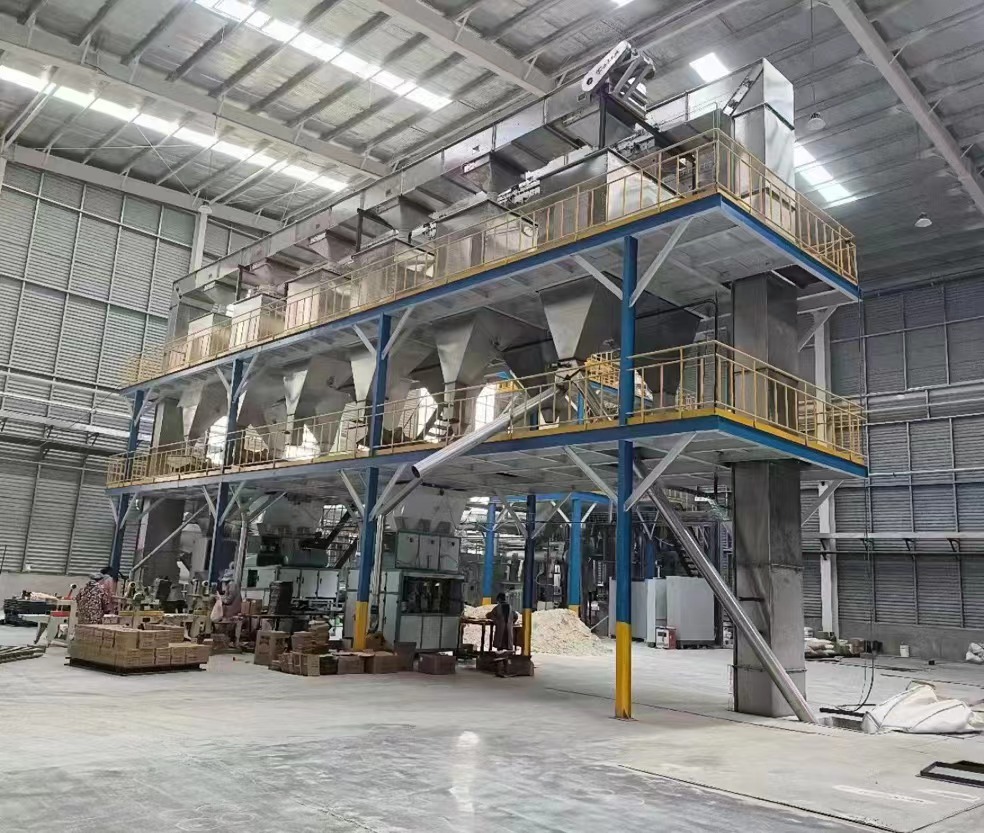

Bucket elevator (abbreviated as bucket elevator) is a widely used vertical or inclined conveying equipment, mainly used to lift various bulk materials. According to the characteristics of materials and industry requirements, bucket elevators can lift the following types of materials:

1. Powdered materials
Typical materials: cement, flour, lime powder, coal powder, talc powder, calcium carbonate, gypsum powder, etc.
Characteristics: Powdered materials have good fluidity, but are prone to generating dust. The sealing design of the bucket elevator can effectively prevent dust from overflowing.
2. Granular materials
Typical materials: grains (such as wheat, corn, rice), plastic pellets, fertilizers, feed, salt, sugar, etc.
Characteristics: Granular materials usually have good fluidity, and bucket elevators can efficiently and continuously complete lifting tasks.
3. Small pieces of material
Typical materials: ore, coal, crushed stone, limestone, coke, slag, etc.
Characteristics: Small pieces of material are usually heavy and require the bucket elevator to have high load-bearing capacity and wear resistance.
4. Wet or viscous materials
Typical materials: wet sand, clay, sludge, wet coal, etc.
Characteristics: This type of material is prone to adhere to hoppers or conveyor belts, requiring the selection of specially designed hoppers (such as perforated hoppers) or the addition of cleaning devices.
5. High temperature materials
Typical materials: hot cement, hot slag, high-temperature furnace ash, etc.
Features: The bucket elevator needs to be made of high-temperature resistant materials (such as heat-resistant steel) and specially designed to adapt to high-temperature environments.
6. Corrosive materials
Typical materials: chemical raw materials, fertilizers, salts, etc.
Characteristics: The bucket elevator requires the use of corrosion-resistant materials (such as stainless steel or plastic) to manufacture the hopper and housing.
7. Lightweight materials
Typical materials: sawdust, sawdust, rice husks, plastic sheets, etc.
Characteristics: Lightweight materials are prone to drifting, and the bucket elevator needs to have good sealing and appropriate lifting speed.
8. Food materials
Typical materials: flour, sugar, salt, grains, beans, feed, etc.
Characteristics: Food grade materials have high hygiene requirements, and the bucket elevator requires the use of food grade materials (such as stainless steel) that are easy to clean.
9. Other special materials
Typical materials: waste, garbage, recycled materials, etc.
Characteristics: This type of material may have complex composition, and the bucket elevator needs to have strong adaptability and wear resistance.
Key factors in selecting a bucket elevator
Material characteristics: including particle size, humidity, viscosity, temperature, corrosiveness, etc.
Lift height: Choose the appropriate lift height according to actual needs.
Conveying capacity: Select the appropriate bucket elevator model and power according to production needs.
Work environment: Consider environmental factors such as temperature, humidity, and corrosiveness, and choose suitable materials and designs.
The bucket elevator can lift various types of materials, including powder, granular, small block, wet, high-temperature, corrosive, lightweight, and food materials. In practical applications, it is necessary to select the appropriate type and configuration of bucket elevator based on the characteristics of materials and production requirements to ensure efficient and stable operation.